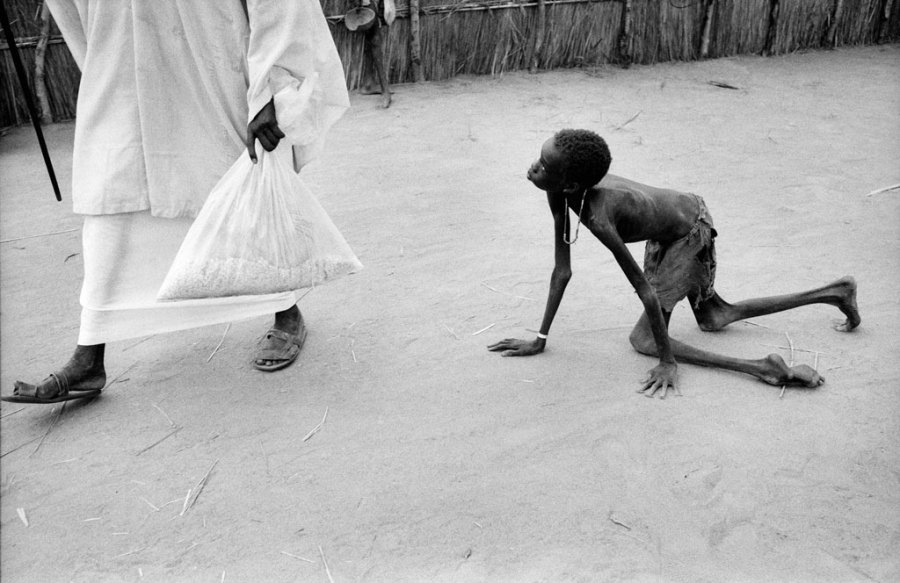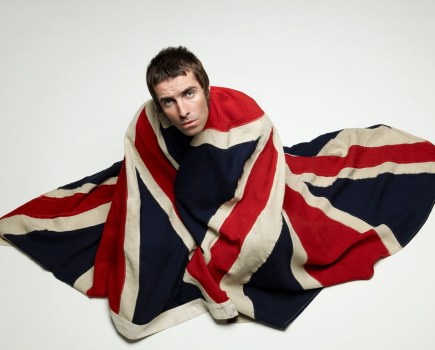In the history of photography there have been many times when images have helped to change the world by shocking people into taking direct action. One notable example is Tom Stoddart’s harrowing image of a starving child, photographed during the Sudanese famine of 1998.
At this time, Sudan was in the grip of a civil war between its Islamic government and the Sudan People’s Liberation Army. To compound the problem, the country was simultaneously devastated by famine. The delivery of desperately needed aid supplies was being hampered by the ongoing war and the result was a humanitarian disaster on a huge scale. Estimates suggest that more than 100,000 people died in the first half of the year in Sudan.
The West was slow to realise the extent of the disaster and few news reports about the famine surfaced in newspapers or on television. However, during a three-month ceasefire in the summer, the airstrip at Ajiep in southern Sudan was opened to enable aid supplies to be delivered to overstretched refugee camps. The ceasefire also allowed a small number of Western photojournalists access to document what was happening in the country.
One of those photojournalists was Tom Stoddart, then in his mid-40s and already established as one of Britain’s most dedicated and talented photojournalists. He had covered many of the major wars, natural disasters and political events of the late 20th century, including conflicts in Beirut, the Romanian Revolution, the fall of the Berlin Wall and the Iraq War.
He had won many accolades, including the prestigious World Press Photo awards for his work in 1993 and 1995. Stoddart, who was then a member of the Independent Photographers’ Group, heard about the situation in Sudan and felt compelled to record it. He self-funded his flight to Ajiep, where he worked alongside the humanitarian medical aid organisation Médecins Sans Frontières, which was setting up feeding centres in the region. There he witnessed at first hand the desperate situation at the epicentre of the famine.
Working exclusively in black & white, Stoddart unflinchingly documented life and death in the camp at Ajiep. His compassionate photographs show the starving, emaciated people he met as they struggled to survive. For many of those he photographed, the aid came too late.
Behind-the-scenes of the iconic photograph
The most famous picture from this harrowing photo-essay showed a skeletal boy who had waited for hours to receive the very limited supplies of aid available. ‘The boy was crawling along the ground with a bag of maize and I was making pictures of the scene,’ Stoddart told me in 2009. ‘Suddenly a guy walked past me and picked up the maize and left very quickly.’ Stoddart’s photograph records the exhausted boy’s expression as he looks towards the relatively wealthy, well-dressed and well-fed man striding away with his food.
As well as recording an actual incident as it happened, the picture also works on another level. ‘From my point of view,’ continued Stoddart, ‘it’s a symbolic image of Africa as it shows a man with a stick keeping everyone else down. The picture works because of several components – the man’s finger pointing down on the stick, the fact that you can see the maize through the bag and the completely disdainful expression on the boy’s face.’
Stoddart returned to England with around 40 rolls of film and showed a selection of the resulting images to Eamonn McCabe, The Guardian’s picture editor at the time. The paper published a selection of the images on 12 August 1998, with one displayed prominently on the front page. At Stoddart’s request, the text included a phone number by which people could donate to Médecins Sans Frontières. As a direct result of people seeing these images, more than £100,000 was given to the charity.
Stoddart said he received some criticism from people who believed he should have intervened in the incident by taking the bag of maize from the man and returning it to the boy. Photographers in this situation are faced with this kind of dilemma all the time,’ he says. ‘The picture shows something that happens every second in Africa and other Third World countries. My job is to bring back telling images. This one moved people and still does, so I did what I was there to do. I’m very proud of my work from Sudan.’
In his book iWitness, published in 2004, Stoddart summed up his approach to photojournalism. Subjects such as the starving boy in Ajiep are, he says, ‘Real heroes, unlike those shallow icons from the worlds of cinema, fashion or football, so carefully manufactured to sell movies, newspapers, cars and sunglasses. They are innocent people trapped and battered by circumstances beyond their control. Ordinary humans in extraordinary situations, displaying immense courage, sacrifice, dignity and the determination to survive what has befallen them and their loved ones. So don’t feel sorry when you look at these pictures – feel angry that we need to be reminded of such folly. It is sad but necessary that these photographs exist.’
Events of 1998
- 26 January: President Bill Clinton denies having had a sexual relationship with former White House intern Monica Lewinsky
- 4 February: More than 5,000 people are killed in Afghanistan by an earthquake measuring 6.1 on the Richter scale
- 20 February: In the ongoing Iraq Disarmament Crisis, Iraqi President Saddam Hussein agrees to weapons inspectors returning to Baghdad
- 23 February: Osama bin Laden signs a Fatwa in the name of the ‘World Islamic Front for Jihad Against Jews and Crusaders.’ It declares the killing of North Americans and their allies an ?individual duty for every Muslim?
- 23 March: Director James Cameron?s film Titanic wins a record 11 Academy Awards at the 70th Academy Awards ceremony
- 10 April: The Belfast Agreement, also known as the Good Friday Agreement is signed by the Irish and British governments and most political parties in Northern Ireland.
- 7 August: The Yangtze River in China breaks its banks. Thousands are killed and millions made homeless as a result of flooding
- 15 August: The Real IRA detonates a car bomb in Omagh, Northern Ireland. It kills 29 people and injures more than 200
- 19 August: US President Bill Clinton admits that he had an ?improper physical relationship? with Monica Lewinsky and that he had misled the American people
- 4 September: Google Inc is founded by Larry Page and Sergey Brin, both PhD students at Stanford University in California
Recommended Resources
Books: iWitness (published by Trolley) is a collection of Stoddart’s photojournalism up to that date. It includes his photographs of famine and AIDS in Africa, the siege of Sarajevo and war in Iraq.
Websites: Tom Stoddart’s own website (www.tomstoddart.com) includes a selection of his extensive photojournalism and corporate work, plus biographical information.
Related content:
- Remembering Tom Stoddart
- Best cameras for photojournalism and documentary
- Photo Critique: Photography should be more than just technical
- Annabel Moeller: candid portraits to war photojournalism
Follow AP on Facebook, Twitter, Instagram, YouTube and TikTok.







